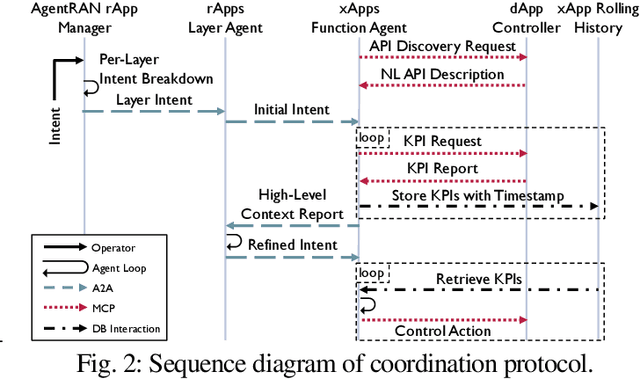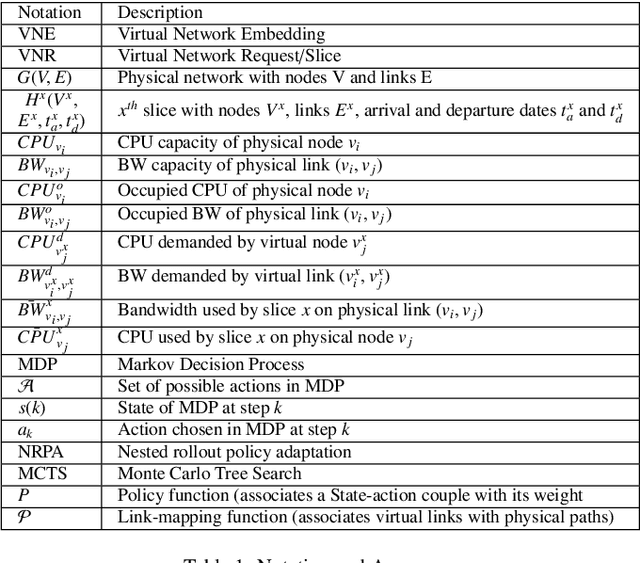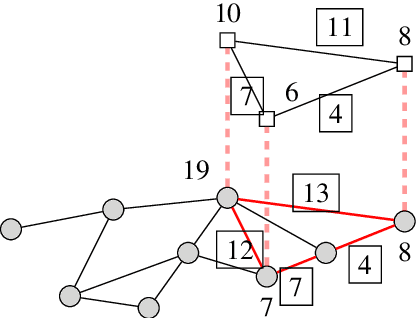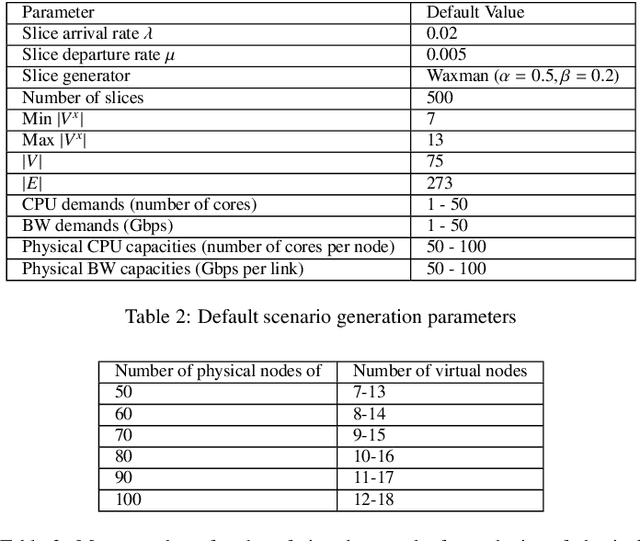Maxime Elkael
AgentRAN: An Agentic AI Architecture for Autonomous Control of Open 6G Networks
Aug 25, 2025



Abstract:The Open RAN movement has catalyzed a transformation toward programmable, interoperable cellular infrastructures. Yet, today's deployments still rely heavily on static control and manual operations. To move beyond this limitation, we introduce AgenRAN, an AI-native, Open RAN-aligned agentic framework that generates and orchestrates a fabric of distributed AI agents based on Natural Language (NL) intents. Unlike traditional approaches that require explicit programming, AgentRAN's LLM-powered agents interpret natural language intents, negotiate strategies through structured conversations, and orchestrate control loops across the network. AgentRAN instantiates a self-organizing hierarchy of agents that decompose complex intents across time scales (from sub-millisecond to minutes), spatial domains (cell to network-wide), and protocol layers (PHY/MAC to RRC). A central innovation is the AI-RAN Factory, an automated synthesis pipeline that observes agent interactions and continuously generates new agents embedding improved control algorithms, effectively transforming the network from a static collection of functions into an adaptive system capable of evolving its own intelligence. We demonstrate AgentRAN through live experiments on 5G testbeds where competing user demands are dynamically balanced through cascading intents. By replacing rigid APIs with NL coordination, AgentRAN fundamentally redefines how future 6G networks autonomously interpret, adapt, and optimize their behavior to meet operator goals.
Large-Scale AI in Telecom: Charting the Roadmap for Innovation, Scalability, and Enhanced Digital Experiences
Mar 06, 2025



Abstract:This white paper discusses the role of large-scale AI in the telecommunications industry, with a specific focus on the potential of generative AI to revolutionize network functions and user experiences, especially in the context of 6G systems. It highlights the development and deployment of Large Telecom Models (LTMs), which are tailored AI models designed to address the complex challenges faced by modern telecom networks. The paper covers a wide range of topics, from the architecture and deployment strategies of LTMs to their applications in network management, resource allocation, and optimization. It also explores the regulatory, ethical, and standardization considerations for LTMs, offering insights into their future integration into telecom infrastructure. The goal is to provide a comprehensive roadmap for the adoption of LTMs to enhance scalability, performance, and user-centric innovation in telecom networks.
Monkey Business: Reinforcement learning meets neighborhood search for Virtual Network Embedding
Feb 28, 2022



Abstract:In this article, we consider the Virtual Network Embedding (VNE) problem for 5G networks slicing. This problem requires to allocate multiple Virtual Networks (VN) on a substrate virtualized physical network while maximizing among others, resource utilization, maximum number of placed VNs and network operator's benefit. We solve the online version of the problem where slices arrive over time. Inspired by the Nested Rollout Policy Adaptation (NRPA) algorithm, a variant of the well known Monte Carlo Tree Search (MCTS) that learns how to perform good simulations over time, we propose a new algorithm that we call Neighborhood Enhanced Policy Adaptation (NEPA). The key feature of our algorithm is to observe NRPA cannot exploit knowledge acquired in one branch of the state tree for another one which starts differently. NEPA learns by combining NRPA with Neighbordhood Search in a frugal manner which improves only promising solutions while keeping the running time low. We call this technique a monkey business because it comes down to jumping from one interesting branch to the other, similar to how monkeys jump from tree to tree instead of going down everytime. NEPA achieves better results in terms of acceptance ratio and revenue-to-cost ratio compared to other state-of-the-art algorithms, both on real and synthetic topologies.
 Add to Chrome
Add to Chrome Add to Firefox
Add to Firefox Add to Edge
Add to Edge